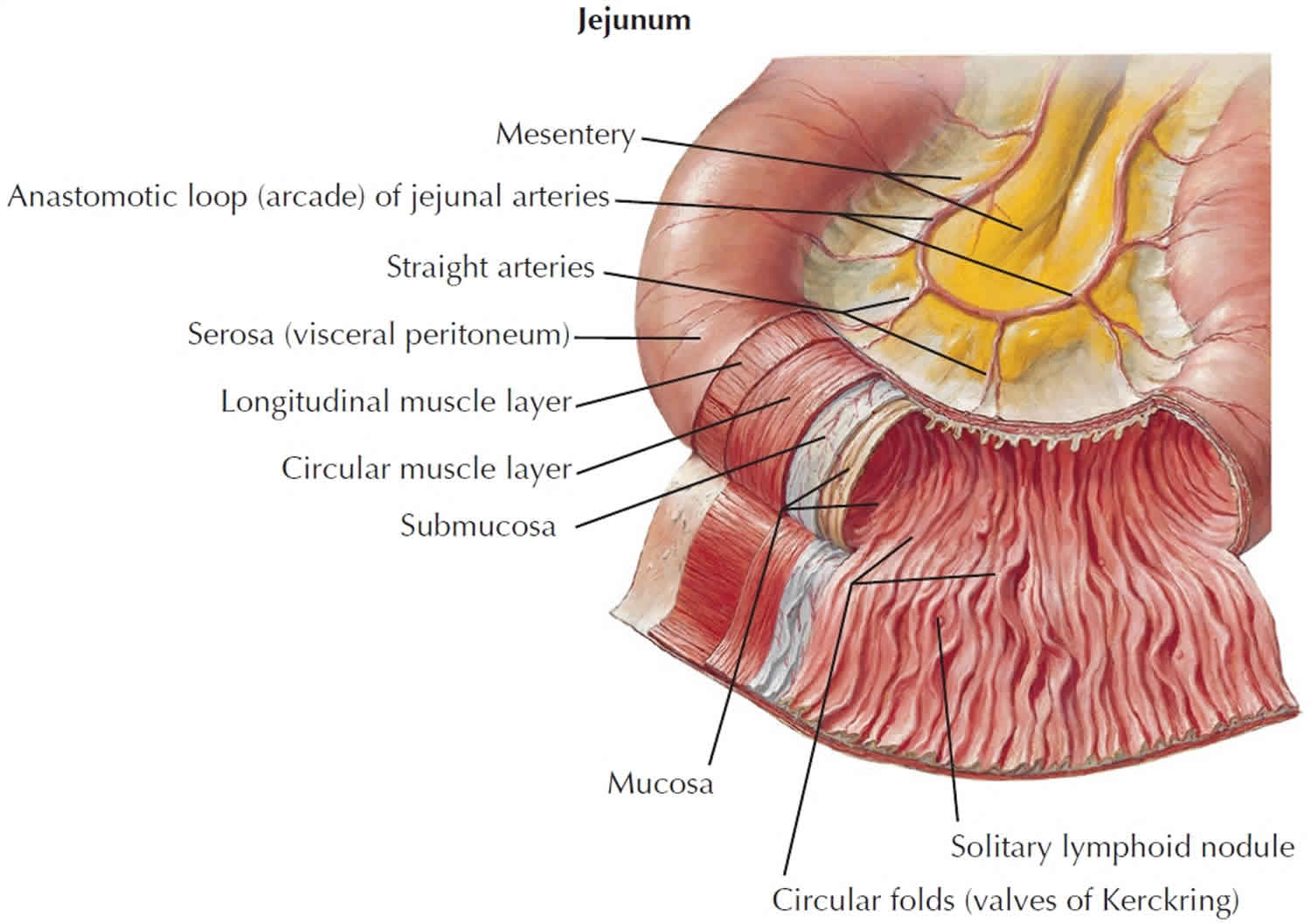What is jejunum
The jejunum (means “empty”) is the second portion of the small intestine and is about 1 to 1.7 m (3 to 5.6 ft ) long and extends to the ileum. The jejunum by definition, is the first 40% of the small intestine beyond the duodenum. Jejunum name refers to the fact that early anatomists typically found it to be empty. The jejunum begins in the upper left quadrant of the abdomen but lies mostly within the umbilical region. The jejunum wall is thick and muscular, and it has an especially rich blood supply, which gives it a relatively red color. Most digestion and nutrient absorption occur here. Free fatty acids are most commonly absorbed in the jejunum of the small intestine 1. Most proteins are absorbed as amino acids via active transport processes that occur mainly in the duodenum and jejunum. Folate goes through hydrolysis, is absorbed in the duodenum and upper part of the jejunum 2.
Cholecystokinin (CCK) is secreted by the mucosa of the duodenum and proximal jejunum, primarily in response to fats in the small intestine. Cholecystokinin (CCK) also stimulates the pancreatic acini to secrete enzymes, but it is named for its strongly stimulatory effect on the gallbladder. Cholecystokinin is released in the presence of fatty acids and amino acids inside of the duodenum and acts to inhibit gastric emptying and also to stimulate contraction of the gallbladder while simultaneously causing relaxation of the sphincter of Oddi to allow delivery of bile into the duodenum to aid in digestion and absorption of nutrients.
The jejunum and ileum receive their blood supply from a rich network of arteries that travel through the mesentery and originate from the superior mesenteric artery. The multitude of arterial branches that split from the superior mesenteric artery is known as the arterial arcades, and they give rise to the vasa recta that deliver the blood to the jejunum and ileum.
Figure 1. Small intestine
Jejunum function
The jejunum primary function is absorption, where sugars, amino acids, and fatty acids are absorbed.
- Anatomy and Physiology of the Small Bowel. Gastrointest Endosc Clin N Am. 2017 Jan;27(1):1-13. doi: 10.1016/j.giec.2016.08.001. https://www.ncbi.nlm.nih.gov/pubmed/27908510[↩]
- Fish EM, Bhimji SS. Physiology, Small Bowel. [Updated 2018 Oct 10]. In: StatPearls [Internet]. Treasure Island (FL): StatPearls Publishing; 2018 Jan-. Available from: https://www.ncbi.nlm.nih.gov/books/NBK532263[↩]






